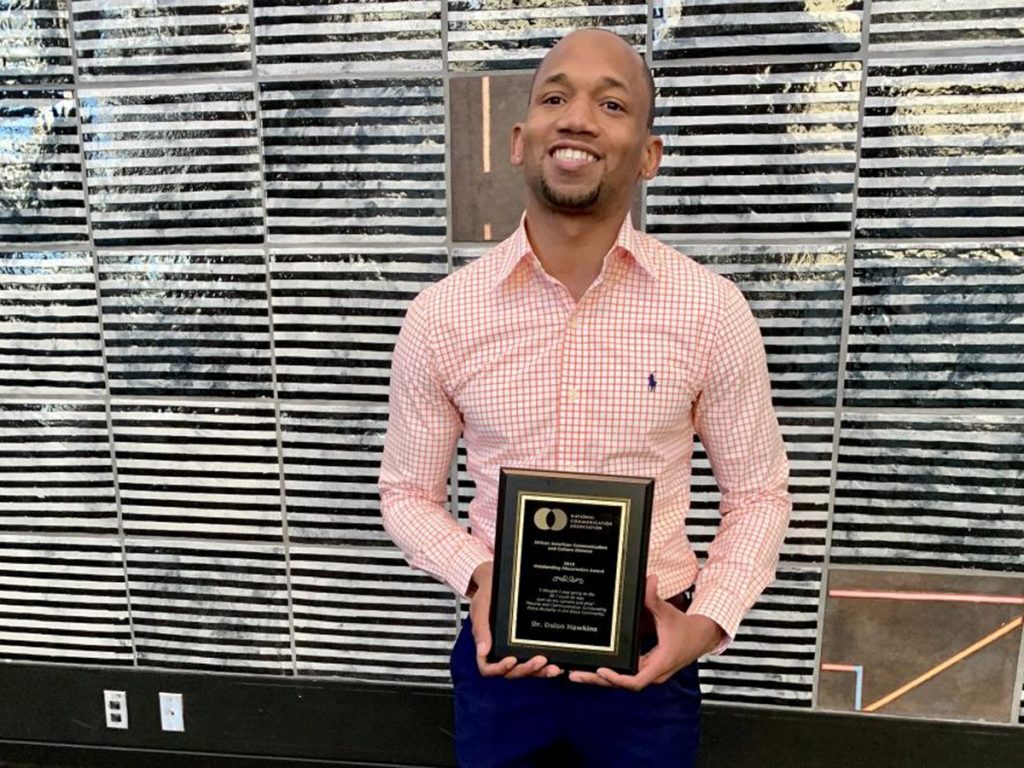Faculty Analyze Presidential Campaign Ads, Debates
By David Ertischek ’01
Both President Donald Trump and President-elect Joe Biden talked a lot in their campaigns’ advertisements and debates. But were they actually saying anything with substance?

Peter Seronick, senior affiliated faculty in the Marketing Communication Department, said that neither candidate seemed to move the needle with their advertisements.
“I would say that both were as expected,” Seronick said. “I would say most of [Trump’s] advertising was speaking to his base. And occasionally he used messages that were trying to grow the base — saving your suburb as an example. Most of his advertising was short on substance and plans, and long on fear.”
The presidential debates also were short on specifics, said Deion Hawkins, assistant professor of Communication Studies and director of the College’s debate team.
“Those of us who are more trained in debates, coaching debates, recognize those debates aren’t truly debating, because there’s no recognition of warrants of refutation,” said Hawkins. “It’s more of a town hall forum.”
Hawkins said he’d like the debates to include fact checking and really pin down candidates on actually answering the questions posed to them.

“[Candidates] don’t have to justify their positions. At the claim level in class, they say what they want to do, but I tell my students that doesn’t mean anything to me – we need the how and the why. We need to support the warrant and backing.”
Specifically, Hawkins said the first debate was an “absolutely travesty,” as Trump was just yelling.
“It opened a lot of eyes to how Trump acts. If he acts like this in front of millions of people, imagine what he acts like in private?” said Hawkins. “Because it went so poorly, it meant Trump had to do the bare minimum in the second debate and do better. Inevitably, it did help him.”
Hawkins said that when he discusses Biden’s debate style with his colleagues, there is a consensus that it’s not his strongest political skill. Biden’s age, stutter, and relative slowness to respond may affect his debating, he said.
Targeting Voters
Seronick said Biden’s advertising was empathetic, positive, and tried to reduce stress and angst among those who are left-leaning, undecided, and independents.
As for where the candidates placed their ads, they had to spread it out, but by far television netted the most money from the campaigns. The Markup reported that through October 13, the Biden and Trump campaigns spent $175 million on Facebook ads, and $750 million on television ads. Print, radio, and billboard ads are usually less than 5 percent of presidential advertising spending, according to The Conversation.
Seronick was surprised that the Trump campaign didn’t try to expand and grow its numbers by appealing to a wider group than his base.
“He could have explained his aggressive behavior, and why it’s good for America. He could have explained some of his controversial comments like, ‘There are good people on both sides.’ But I am being rational about a person who is totally emotional,” said Seronick.
Biden positioned himself as an “every voter’s candidate,” said Seronick.
“Biden did what I expected him to do. Be friendly, empathetic, concerned, calming, confident, a guy I’d want to have a beer with or play catch with,” said Seronick. “I think his ‘be president for everyone whether they voted for him or not’ was the way to point out Trump’s tribalism. He positioned himself as the beginning of getting back to normalcy.”
Debatably Unhelpful
Hawkins said that future moderators for debates need to implore candidates to answer questions and provide more accountability. He’d also want to see moderators tallying whether candidates answered or didn’t answer questions.
Hawkins said it’s easier when there are only two candidates on stage, compared to primary debates, when there are lots of people.
“When there’s two people on stage and there’s one and a half hours, there is time to get into the how and why,” Hawkins said. “There are never sources. Ever. We don’t know where numbers or studies come from. That’s day one in Argumentation and Advocacy [class],” he added.
Even flashing statistics or corrections across the television screen for viewers would be helpful.
“On a lot of their websites there will be claims about addressing racial equality. But what is the avenue to get there? And why is that the thing we do?” said Hawkins. “We want to have racial equality, and people say we need prison reform. Why is that the route? These are never unpacked and go untouched.”
Categories